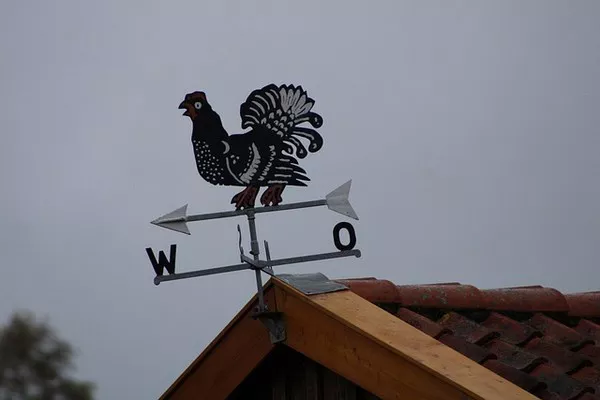Anemometers are invaluable instruments in the field of meteorology, environmental monitoring, and various industrial applications. These devices provide precise measurements of wind speed, aiding in weather forecasting, climate research, and ensuring the safe operation of wind turbines, aircraft, and construction equipment. In this article, we will delve into the mechanics of anemometers, elucidating the principles behind their operation and the different types available today.
The Significance of Wind Speed Measurement
Wind speed is a fundamental meteorological parameter that plays a pivotal role in various aspects of our lives. It influences weather patterns, affects air quality, and has critical implications for industries such as aviation, maritime transport, and renewable energy generation.
Measuring wind speed accurately is essential for several reasons:
Weather Forecasting: Meteorologists rely on precise wind speed data to predict weather conditions, including the development of storms, hurricanes, and other atmospheric phenomena.
Climate Research: Studying long-term wind patterns provides valuable insights into climate change and helps researchers understand the dynamics of the Earth’s atmosphere.
Renewable Energy: Wind turbines harness wind energy to generate electricity. Accurate wind speed measurements are crucial for optimizing the performance and efficiency of these renewable energy sources.
Aviation and Transportation: Pilots and maritime navigators depend on wind speed information for safe navigation and landing procedures.
Construction and Heavy Machinery: Wind speed can impact the stability and safety of construction equipment and cranes, making it vital to monitor wind conditions at construction sites.
To obtain reliable wind speed data, various types of anemometers have been developed, each employing distinct principles and mechanisms to measure wind speed accurately.
Types of Anemometers
There are several types of anemometers, each with its own set of advantages and limitations. The choice of anemometer depends on the specific application, environmental conditions, and the level of accuracy required. Here are some common types of anemometers:
Cup Anemometers: Cup anemometers consist of three or four cups mounted on horizontal arms. As the wind blows, the cups rotate, and the speed at which they rotate is directly proportional to the wind speed. This type of anemometer is simple, reliable, and widely used in meteorological stations.
Vane Anemometers: Vane anemometers utilize a rotating vane or blade to measure wind speed. The vane’s rotation speed corresponds to the wind speed. Vane anemometers are often used in aviation and meteorology.
Hot-Wire Anemometers: Hot-wire anemometers are based on the principle of convective heat transfer. They consist of a thin wire that is heated electrically. As the wind flows over the wire, it cools it down, and the resistance of the wire changes. By measuring this change in resistance, the wind speed can be determined. Hot-wire anemometers are highly sensitive and suitable for low-speed airflow measurements.
Sonic Anemometers: Sonic anemometers employ ultrasonic sensors to measure wind speed. These sensors emit ultrasonic pulses in different directions, and the time it takes for the pulses to travel between sensors is used to calculate wind speed and direction. Sonic anemometers are known for their high accuracy and are often used in research applications.
The Mechanics of Cup Anemometers
To gain a deeper understanding of how anemometers work, let’s focus on cup anemometers, one of the most widely used types.
1. Cup Design: Cup anemometers typically consist of three or four cups mounted on horizontal arms. The cups are designed to catch the wind and rotate around a vertical axis. The size and shape of the cups are carefully calibrated to ensure accurate wind speed measurements.
2. Wind Force: When the wind blows, it exerts a force on the cups, causing them to rotate. The greater the wind speed, the stronger the force, and the faster the cups will rotate.
3. Rotational Speed: Cup anemometers are equipped with a mechanism that measures the rotational speed of the cups. This mechanism can be mechanical, electrical, or electronic, depending on the specific design of the anemometer.
4. Wind Speed Calculation: The rotational speed of the cups is directly proportional to the wind speed. Anemometers are calibrated to provide accurate wind speed measurements based on this relationship. The output is typically given in units such as meters per second (m/s) or kilometers per hour (km/h).
Advantages and Limitations of Cup Anemometers
Cup anemometers have several advantages that make them suitable for various applications:
Reliability: Cup anemometers are robust and have a long lifespan. They can withstand harsh weather conditions, including strong winds and extreme temperatures.
Ease of Use: They are relatively simple to install and maintain, making them accessible for a wide range of users.
Accuracy: Cup anemometers provide accurate wind speed measurements for a broad range of wind speeds.
However, cup anemometers also have some limitations:
Wind Direction: They do not provide information about wind direction. Additional instruments, such as wind vanes, are needed for this purpose.
Response Time: Cup anemometers have a certain response time, which means they may not capture rapid fluctuations in wind speed.
Calibration: Periodic calibration is necessary to maintain accuracy, as factors like friction and wear can affect their performance over time.
Conclusion
Anemometers are essential tools for measuring wind speed in a wide range of applications, from weather forecasting to renewable energy generation and aviation. Different types of anemometers utilize various principles and mechanisms to provide accurate wind speed data. Cup anemometers, with their simple yet reliable design, are particularly popular for many meteorological and industrial applications.
Understanding how anemometers work is crucial for using them effectively and interpreting the data they provide. Whether you are a meteorologist, a wind energy technician, or a researcher, knowing the mechanics of anemometers is fundamental to harnessing the power of wind speed measurements and making informed decisions in various fields.

